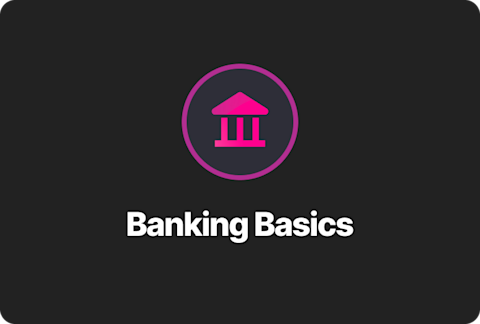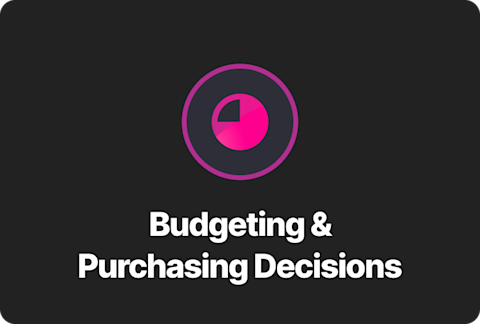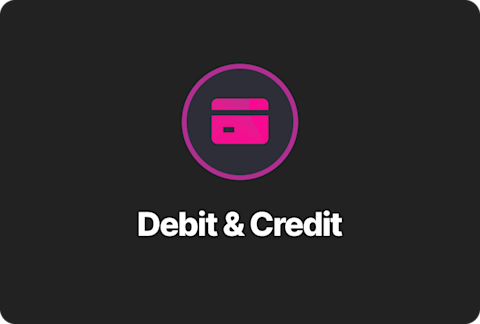Here's how to budget in your teens

You may think you don’t have enough money as a teenager to create a budget, but if you’re serious about financial freedom, particularly as you get older, building good money habits today is important. Using a budget can be a great basis for those money habits.
Creating a budget is actually pretty easy and can even be fun. All it really means is figuring out how much money you have coming in, how much is going out, and how much you can set aside in savings. A budget can also help you manage your day-to-day spending, like whether you have enough money to grab coffee with friends and still pay your cell phone bill.
By starting to budget now, it means you’ll have a system in place when your finances get more complicated.
Here are some easy steps to get you started:
Starting a budget: What are your goals?
The first step in creating a budget is to figure out what you want to accomplish with your money. To stay motivated, you need money goals, just like you do in school, athletics or artistic efforts.
How much spending money do you want for incidentals like getting a coffee or snack after school with friends? What about saving up for that new laptop you’ve had your eye on, or putting money away in an emergency fund in case your car gets a flat tire? Thinking through how you want to spend and save your money will help guide your budget. Optimally, your budget should reflect what matters most to you and what expenses you can cut down on so you can reach your money goals.
A good goal is to save 20% of your income in savings each month. Some of that can be for short-term savings, which is money you can save up within a few weeks or months and that you plan to spend sooner. Maybe that’s money to buy a nice gift for a friend or a parent, or money to take a trip. Long-term savings goals might include college expenses, buying a car, or even saving for your retirement.
It’s helpful to actually write down the most important goals you have for your money and number them in order of priority. Create a timeline of when you want to reach your goal and how much money you’ll have to save each day or week or month to hit that target.
Understand your income
Chances are you probably don’t have a lot of money coming in right now. That’s fine. It’s still important to know what that number looks like. The first step is to figure out how much money you make each month. That’s not just money from a regular job, but from gifts and allowances, too.
If you get a paycheck, make sure you account for taxes that are taken out. If you don’t have a regular monthly income—maybe because you only work in the summer or your babysitting schedule changes a lot—add up how much money you typically make each year. (Don’t forget to include money you might get for holidays or your birthday.) Then divide that number by 12 to get a good idea of your average monthly income.
Track your expenses
Next, you’ll want to calculate how much money you spend, or expect to spend, each month on necessary items like your cell phone or gas for your car. Write down every way you spend money, no matter how small. Do you pay for car insurance? Do you have any subscription services? How often do you buy clothes? Add it all to the list.
If you make purchases mostly with a debit or credit card, your account statements are a good place to see exactly how much you’re spending each month.
Don’t forget to include saving money as an expense. This is the expense of paying your future self and it’s a good habit to get into now.
Smart spending
Once you have an idea of your typical monthly income and expenses, compare the two. If you’re spending way more than you’re making, it’s time to “balance” your budget. A balanced budget means that you are spending less than you’re bringing in.
This may require taking a hard look at your expenses and cutting out things you may want but don’t need. Maybe you can limit yourself to one restaurant meal a week, or ask a sibling to split a Netflix subscription. Cutting back isn’t always easy, but you’ll feel better about it as you watch your savings grow.
While you may still have most of your expenses taken care of by your family, this is an opportunity to really be targeted about what you want to spend your money on, instead of just being impulsive.
If you find yourself without enough money to cover what you consider needs, it may be time to consider ways you can earn more. Can you do more around the house? Can you take on some more babysitting or yard work jobs? Can you fit in more hours working at your part-time job?
However you get there, even after your budget is balanced, that doesn’t mean that your work is over. If you’re making more money than you’re spending, you’ll want to do something proactive like boosting your savings or donating to your favorite charity.
Doing some research to find a cause that you’re really interested in, such as an environmental group or local food pantry. By putting charitable giving in your monthly budget it’s easier to commit to donating money regularly.
Make changes as you grow
The most important rule of budgeting is that you’re never finished. Your expenses will change over time. That’s why you should reevaluate your budget periodically. Make adjustments if your income or expenses change. And consider financial tools that can help you achieve your goals. Step provides a banking experience built just for teens, making it easier to manage your money and track your spending while teaching you lots of smart money tips along the way.








